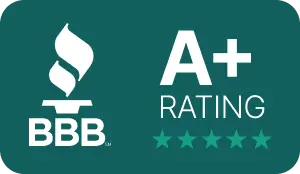Few moments create more uncertainty than the reading of a will—especially in blended families where spouses, biological children, step-children, and adopted heirs all have a stake. At our probate-funding desk, we have witnessed how confusion over statutory shares, elective spousal rights, and intestacy rules can freeze estates for months, leaving families without liquidity just when funeral bills, mortgage payments, and legal retainers come due. Understanding who is entitled to what—and how courts resolve the gray zones—can help heirs protect both their inheritance and their peace of mind.
Spousal Shares: Community Property, Elective Shares and Pre-Nups
In most of the western United States, community-property statutes automatically vest a surviving spouse with one-half of all community assets, regardless of the will’s language. Elsewhere, elective-share regimes allow spouses to claim a percentage (often one-third) of the augmented estate even if the will tries to leave them less. Those claims surface early, usually at the inside view of a probate court hearing, where judges confirm that statutory notices went out and that the surviving spouse has either accepted the will or filed an election.
From a funding perspective, spousal rights create both certainty and urgency. Certainty, because the statute books outline minimum percentages; urgency, because failure to assert the elective share within prescribed deadlines can waive the right forever. We frequently advance funds so newly widowed spouses can hire counsel to run asset tracings, value real property, and lodge timely claims without dipping into personal savings.
Step-Children: The “Almost” Heirs
Step-children occupy an uneasy space in probate law. Unless formally adopted or specifically named, they inherit nothing under default intestacy rules. Yet emotionally, they may have lived in the decedent’s household for decades, paid household bills, or contributed sweat equity to a family business. When a will omits them—or worse, an unsigned draft appears that includes them—disappointment can harden into litigation.
We see these disputes escalate when the nominated executor drags their feet on paperwork, allowing assets to languish untitled. If court letters never issue, step-children lack standing to demand an accounting or to contest the will. In that scenario, swift action to appoint a personal representative becomes pivotal, especially if an executor fails to file. Our advances often cover the filing fee and bond premium for a step-child who petitions to be appointed administrator when the named executor goes silent, protecting real estate from tax liens and insurance lapses in the meantime.
Adopted Heirs: Equal on Paper, Complex in Practice
Legally, a properly adopted child stands in the same line as a biological child, inheriting an equal share of the intestate estate and enjoying the same right to challenge a will. But practice rarely proves so tidy. Out-of-state adoptions, sealed juvenile court records, or informal caregiving arrangements can leave siblings arguing over legitimacy. Courts resolve those disputes by examining adoption decrees, agency paperwork, and, where necessary, DNA tests.
Timing matters here, too. If the estate owns a home that was meant to sit in a revocable trust but never got retitled, heirs might deploy California’s Heggstad shortcut to pull the house under the trustee’s umbrella and avoid a year-long probate. We fund many adopted heirs through that process because a Heggstad petition requires front-loaded expenses—title reports, appraisals, and often a declaration from the drafting attorney—yet resolves far faster than full probate, meaning the advance accrues less total fee.
Intestacy Roulette: What Happens When No Will Surfaces
When the deceased dies intestate, statutory formulas dictate distribution: spouses, then descendants, then parents, then more remote relatives. Step-children fall off the list; adopted heirs remain. But even a straightforward statute can paralyze families if no one steps up to open the estate. Courts will not recognize any heir’s rights until someone files the initial petition.
Knowing how to petition the court to open probate is therefore a survival skill. Publication fees, bond premiums, and certified letters cost real money that some heirs simply do not have. A non-recourse probate advance can cover those immediate outlays, ensuring the petition lands on the clerk’s desk before critical deadlines—tax filings, insurance renewals, mortgage grace periods—expire.
Fiduciaries on the Hot-Seat: Executors, Trustees & Guardians
Even when inheritance rights are crystal clear, poor fiduciary performance can drain value before assets reach the heirs. Executors forget to inventory cryptocurrency, trustees ignore diversification duties, guardians mingle ward funds with their own checking accounts—each misstep invites surcharge actions and delays. Understanding the landscape of duties, liabilities and best practices helps heirs spot red flags early.
From a funding standpoint, we assess fiduciary risk the moment an heir applies. If an inexperienced executor controls rental properties, we may recommend a modest advance to pay for professional management and liability insurance. If a trustee faces beneficiary hostility, we can structure draws to finance mediation before everyone races to court. Because repayment comes solely from the inheritance, our interests align with efficient, compliant administration.
Litigation Pressure Points—and Funding Solutions
Inheritance disputes tend to flare at predictable moments: the first inventory (asset valuations), the preliminary accounting (expense objections), and proposed distributions (percentage fights). Spouses may claim an omitted joint bank account; step-children may sue for unjust-enrichment after years of caring for the decedent; adopted heirs may challenge a biological child’s attempt to exclude them. Each lawsuit extends the timeline, forcing estates to pay carrying costs months—or years—longer than planned.
Probate advances convert a distant share into today’s dollars, allowing heirs to cover living expenses while negotiations unfold. Unlike bank loans, our funding is non-recourse; if litigation slashes the ultimate distribution, heirs owe nothing beyond the estate’s final proceeds. That structure buys breathing room, so parties can mediate rather than accept pennies on the dollar to pay next month’s rent.
Best Practices for Blended Families Planning Ahead
Families can avoid most conflicts with clear drafting:
- Name heirs individually. “Children” may exclude step-children; better to list each beneficiary by full legal name.
- Update after major life events. Remarriage, adoption, and relocation all shift inheritance rights; stale wills sow confusion.
- Title assets correctly. Deed real property into the trust now rather than relying on post-mortem fixes.
- Choose professional fiduciaries when blends run deep. A corporate trustee or third-party executor reduces perceived favoritism and personal liability risk.
- Maintain liquidity. Life-insurance proceeds or a joint bank account can cover immediate bills, reducing pressure to fire-sale assets or borrow at high rates.
Closing Thoughts: Clarity Equals Speed
Spouses, step-children, and adopted heirs each occupy distinct rungs on the inheritance ladder, but they share a common enemy: uncertainty. When rights are unclear, courts step in, timelines stretch, and estate equity erodes under taxes, insurance, and maintenance costs. Probate funding cannot change the statute books, yet it can neutralize the financial stress that pushes families into hasty settlements or destructive lawsuits.
Whether you are asserting a spousal elective share, locating adoption paperwork, or petitioning to replace an absentee executor, liquidity buys you the time and expertise to do it right. And doing it right—early, transparently, and with adequate resources—protects the inheritance your loved one intended, no matter how complex the family tree.








